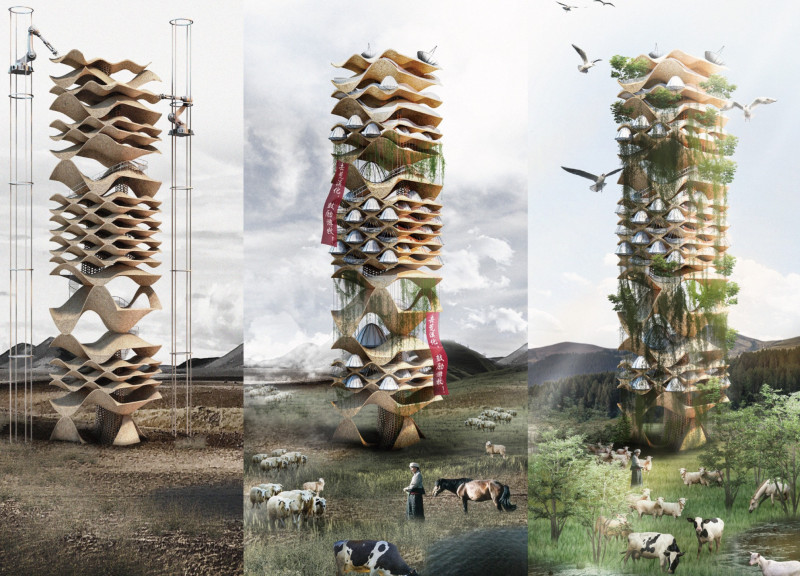5 key facts about this project
The project titled "Nomadic Revival - An Attempt at the Hunsandak Sands" is located in the Hunsandak Sandy Area of Inner Mongolia, China. This region faces serious challenges due to desertification caused by both climate change and human actions. The design interprets nomadic living in a way that respects traditional practices while incorporating concepts of sustainability. The aim is to create an environment that combines fixed structures with mobile elements, allowing inhabitants to adapt to seasonal changes in the harsh climate.
Materials and Structure
The design features permanent frame towers along with lightweight canvas tents. This combination offers flexibility for living arrangements. The permanent structures provide stability and protection from the elements, while tents allow for mobility as inhabitants migrate with their livestock. This dual approach ensures that people can remain connected to the resources they need, aligning with their way of life.
Ecological Context
The project incorporates research on environmental issues related to desertification. It highlights land degradation and the effects of climate on local ecosystems. Sand and mycelium are chosen as primary materials for construction. Sand, abundant in the region, serves as a natural building block, while mycelium contributes to ecological performance. This choice of materials emphasizes the commitment to sustainability and acknowledges the ecological context of the area.
Layout and Functionality
The arrangement of spaces is designed for living, community interaction, and livestock management. It ensures efficient use of land while promoting a sense of belonging among inhabitants. By carefully organizing these functions, the layout supports both daily life and the migratory patterns essential to nomadic traditions. The project cleverly accommodates the practical needs of its users.
Visual Language
The design connects the built environment with the surrounding landscape. Architectural forms reflect local topographies and natural features. This careful integration enables structures to blend with their environment rather than disrupt it. The attention to these design details creates a unified aesthetic that underscores the project’s approach to sustainable living without drawing attention away from the landscape itself.




















































